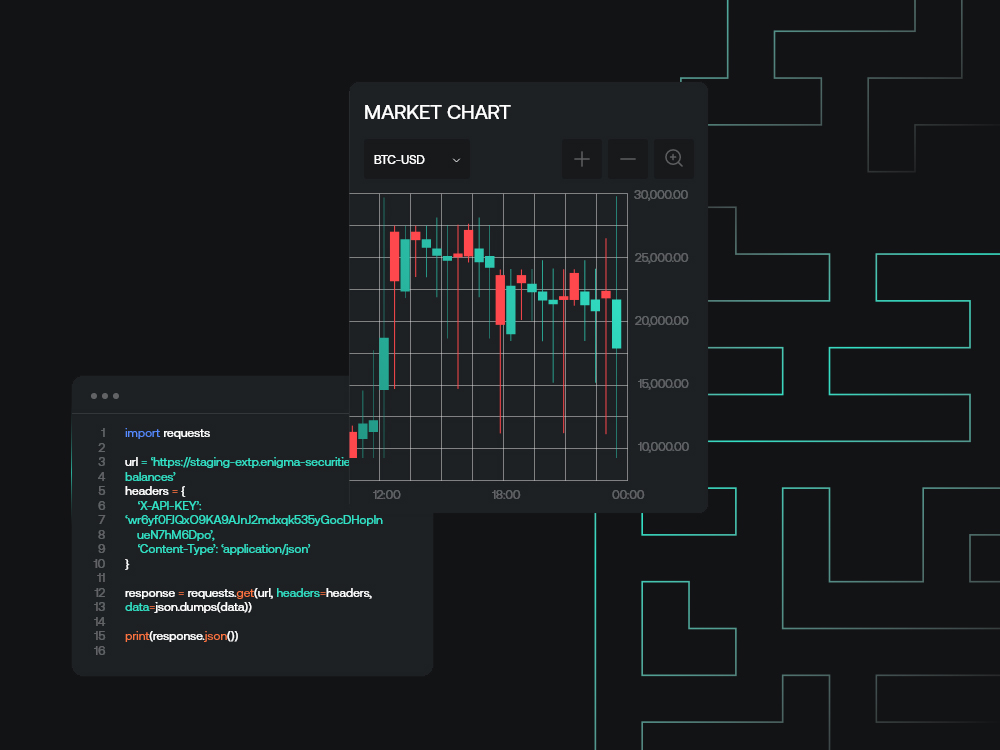-
Share on Facebook
-
Share on Twitter
-
Share on LinkedIn
-
Copy link
Copied to clipboard
Binance litigation: four (4) thoughts
The CFTC indictment against Binance charges the firm, CEO Changpeng Zhao, and ex-compliance head Samuel Lim with the following: illegal futures markets; illegal commodity options; failure to register as a FCM; failure to register as a DCM; failure to diligently supervise; failure to implement KYC/AML; and enabling KYC evasion.

Executive Summary
-
We see the Binance charges as not out of the ordinary for any entity that operates as Binance has done in the past.
-
The most troubling element of the charges are the implications of territoriality expectations on off-shore entities (particularly market makers) that would seem to go far beyond those seem in the recent past.
-
It seems likely that regulators are intending to apply something of a ‘scarlet letter’ to Binance in order to discourage any scaleable B2B relationships with the exchange.
-
The best case would be that the situation plays out along similar rails to the case against BitMEX and its founders in 2020.
The charges
The CFTC indictment against Binance charges the firm, CEO Changpeng Zhao, and ex-compliance head Samuel Lim with the following: illegal futures markets; illegal commodity options; failure to register as a FCM; failure to register as a DCM; failure to diligently supervise; failure to implement KYC/AML; and enabling KYC evasion.
The first four of these charges almost come as a given. Like every off-shore retail exchange, Binance decided to set up operationally and worry about the rest later; it was all but expected that they would eventually face charges in the US on said points, pay a fine and perhaps have to restructure some operations going forward, and move on. Whether said charges end in such a manner is perhaps up for debate given the current client, but the important part here is that it comes as absolutely no surprise.
The latter three are the ones that have received more attention overall, though again, they weren’t complete unknowns. Again, as with most off-shore exchanges, Binance KYC was known to be lax at first, because frankly, to not have lax KYC as a retail exchange in 2017 would have presented too much of an obstable to onboarding. The firm was actually stricter than a lot of its competitors, with lower withdrawal limits and higher tiers of KYC/AML implemented more quickly than many others did, but was still clearly lacking.
The CFTC case contains some eye-catching statements, which mainly fall into two categories. Firstly, statements from 2018 and early 2019 indicating that the company knew that they had a US client base accounting for around 20% of volumes and web traffic, and that the talk of launching for the first time in the US with Binance.US was a fugazi.
Secondly, later statements indicate that the firm knew that the account registration system (which initially allow for transfers with absolutely no KYC) and the platform in general were being abused by clients in high-risk jurisdictions.
The sad reality is that none of this is particularly surprising. Few retail money transmitter businesses, let alone retail crypto exchanges, are oblivious to the fact that some portion of their usage is put towards unsavoury means.
However, what should be said here is that the indictment does not actually reveal a level of active cooperation that would open the door for more serious charges directed at CZ or other Binance personnel individually. The worst points – things such as the explicit shift to encrypted communication via Signal in October 2020 – still are more inferences than anything else.
This is all hence in line with what we would expect from a firm like Binance with long-term US aspirations but without a true US focus (remember that the 20% within the US still means 80% from outside) – not asking permission, but trying to thread the needle in order to operate in a way where they are still able to seek forgiveness. In fairness, this approach has generally worked out well enough for firms like Tether and BitMEX in the past; the question ultimately comes down to whether the climate is now different.
The Trading Firms and jurisdictions
An extremely important part to highlight outside of the charges and general language is this: a large part of the CFTC complaint centres around three trading firms on Binance, operating on spot and derivative markets alike with “dedicated trading desk(s) that utilizes automated trading strategies”, While not explicitly stated in the complaint, it appears that all three firms are market makers on Binance, and while we will not spell it out here, the first two firms in particular (Trading Firms A and B) are identifiable with a fairly high degree of certainty from their geographical footprint, and are major players in both crypto and tradfi market making.
They are identifiable, in part, because the CFTC goes to great lengths in the complaint to run through their structures – not only on a corporate level, but all the way down to the location of teams of sales and trading staff, to illustrate that said firms were in practical terms operating out of the US in their dealings with Binance, even if all operations were done through Cayman or BVI entities.
That the CFTC would specifically focus on this point is interesting, and for a number of companies in the space, will be troubling, because it feels semi-superfluous to the case in hand. Of course, evidence is ultimately evidence, and anything that strengthens the case is to the benefit of the prosecution; but the inclusion and focus here seems to be more about setting a precedent here that companies that operate under this sort of structure (of which there are plenty) are not safe from recourse if US authorities judge that they are not truly operating off-shore.
Perhaps ironically, this is something that is less of concern to crypto-native companies than tradfi companies, particulary market makers with feet in both pools as such; a smaller scope of operations and individuals involved makes it easier for the former to present a stronger case of being fully off-shore, whereas it is much harder for the latter to show total separation from any US operations, and barely conceivable for most that they would operate on a group level outside of the USmarket entirely.
The scarlet letter effect
What, ultimately, is the point of the CFTC’s case?
This may seem like an odd question, but after the events of the last month or two in relation to both Binance and to crypto as a whole, with respects to the timings, to the charges being levied, and to fiascos such as the Signature seizure, it has to be considered. Why now, when rumours of charges against Binance from authorities have been circulating for so long that it has become practically memetic? Why so much at once?
Putting asides any broader theories for now, the content and structure of the CFTC action here, particularly with regards to the position of the market makers (not actively going after them as of yet, but making sure to make it clear to even the outside world that they know who they are), seems inexorably aimed towards making one thing clear: if one touches the US market in any way, don’t touch Binance.
As much as the intiial pass on this would frame it as focusing on stopping US users from using Binance, ultimately, authorities are aware that with where Binance is located and with their ability to surveil and punish individual users (even ‘VIPs’), even an environment where every I has to be dotted and every T has to be crossed won’t slow anyone down in the longer term.
History has shown us that no amount of enforcement tends to be able to slow or stop the growth of an offshore exchange, short of a total shutdown (which is practically impossible at this point with Binance).
What can kill them, or at least wilt them, is loss of relationships and loss of liquidity. The memory of Mt. Gox tends to make people forget that most dead exchanges are still with us – the BitMEXes, the Bitfinexes, the Chinese exchanges from 2017. Economic blockades may not be foolproof, but they work far more often than they don’t.
BitMEX as a comparator
Speaking of BitMEX, one final point to end on that is perhaps a little more optimistic in some sense. The closest relation to the Binance CFTC charges in recent memory was probably the charges filed against BitMEX in October 2020, in which US regulators went after the exchange on very similar grounds to Binance’s case – Bank Secrecy Act violations, inadequate KYC/AML checks, service of US clients, an even more obvious US personnel footprint, and so on.
There were still significant differences; principally, the BitMEX case contained a criminal case directed against the founders (in addition to civil action from the CFTC) rather than a civil case against Binance as a whole, and as mentioned, the focus on geographies and jurisdictions is primarily to the Binance case, but was more secondary on the BitMEX case. However, on the whole, there are enough similarities for them to be worth considering as possible comparators.
One big thing to note is that markets dipped in the immediate aftermath of the BitMEX announcement, but recovered quickly, and of course would see parabolic growth soon after (in January 2021). While the initial and understandable reaction to cases like this is to worry about extended uncertainty, and therefore extended depression, in the market, it probably is one of those cases where that risk has already been priced in for the most part.
More broadly, the resolutions to the BitMEX case were actually as close to a win-win for both sides as you could hope for. On the DoJ’s side, they settled for significant penalties on BitMEX in the end – $100m initially and an additional $30m in a follow-up focused on the derivatives business.
However, on BitMEX’s end, founder Arthur Hayes avoided jail time, receiving just six months of house arrest and 2 years of probation. The exchange continued to operate, and while BitMEX has largely been in decline since March 2020, it remains existent, solvent, with wings clipped but still holding life yet. The firm still sits on a large treasury (as evidenced from various recent sports sponsorship deals with the likes of AC Milan) and launched its own exchange token, BMEX, in November.
The difference here is that BitMEX by October 2020 was already well in decline, whereas Binance still has a lot to loose. Data from provider Kaiko indicates that Binance’s market share on its BTC pairs has dropped from 65% of the total BTC market a couple of weeks ago to under 30% as of earlier this week. This does come in the context of Binance ending a long-standing no-fees promotion on said pairs, but even broader data suggests a contraction of Binance’s total market share from 70% to just north of 55%.
The indictment is likely to have long-standing consequences for Binance in particular, with the exchange already beginning to come under pressure with respects to having to cut marketing and sponsorship spending due to the dramatic recent fall in volumes (and a spend estimated in the billions in 2022). However, it may not cast the cloud over the broader crypto market that one might naturally expect.



